by Ken Gargett
That I ever got interested in cigars is something I cannot really explain. It happened late last century, even though I had never (and still have not) had so much of a puff of a cigarette in my life, and not the slightest interest in ever doing so. I can’t even recall how or why cigars started, but I can say that like so many small interests, it grew into, if not an obsession, certainly a serious fascination.
Back in those early days, a good friend would host a monthly cigar dinner at a local restaurant. Try doing that these days and you are likely to find your head exhibited on a spike next morning. Good fun, good wines, good company, and a range of cigars that always featured something a bit special. They were very popular evenings.
One stands out. My friend was late arriving, which only heightened the anticipation – he never let us in on what the featured cigar would be prior to the evening. Would it be a great Cohiba, a perfect Partagás, a brilliant Bolivar, or a magnificent Montecristo? We were all guessing.
Finally he arrived. We had “intro” cigars to keep us ticking along until this stage (usually a Montecristo 4 or something similar), before he announced that evening’s featured cigar: the Saint Luis Rey Double Corona. Saint Luis Rey? Was this a joke? To say that the response was a bit underwhelming would be a gross exaggeration. Most people looked like they’d just found a live cockroach in their martini.
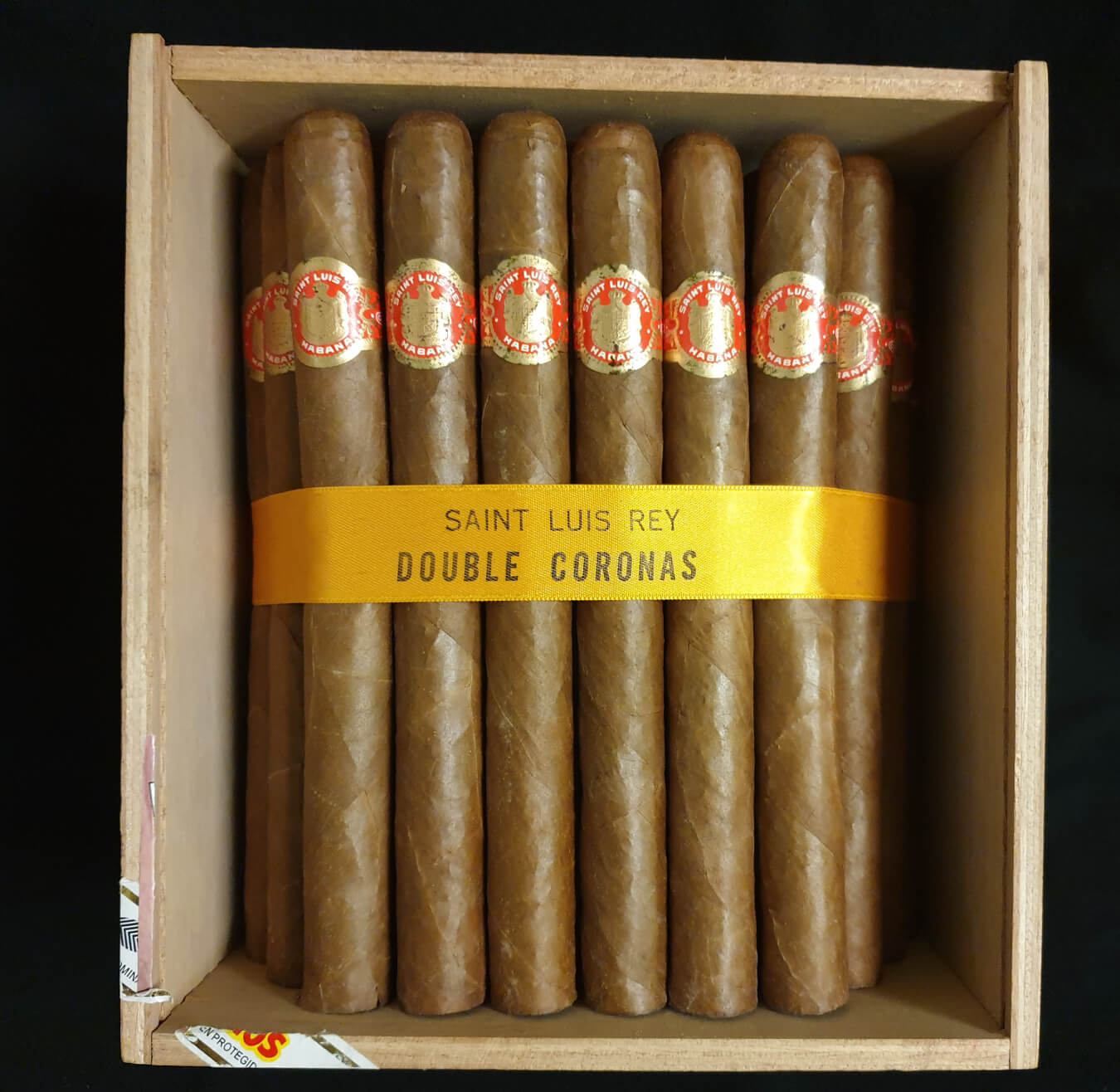
Box of Saint Luis Rey Double Corona cigars
Of course, this wouldn’t be much of a story if the cigar had been a flop, although there was far from unanimous acclamation for it (I still believe that some guests failed to see its glories as they were so attuned to the expectation of one of the big guns). Personally, I loved it.
And I remember that cigar well. It was the 2001 release, the very first ever made. Stunning. As is typical of the cigar world, when one says “2001” the reality was more 2001/2002 and they still did not arrive until a year later, this dinner taking place in May 2003.
I especially remember the ash. To this day, I’ve never seen anything like it. It was well over half the length of the cigar before it finally parted company and dropped away. That speaks of construction at the very highest level.
Before I get into the specifics, at the end of the dinner, I recall my friend noting that the price was AUD$40 a stick – fairly hefty in those days – but they were half price that evening. He only had eight left. I grabbed the lot. It was quite some time before any arrived Down Under again, but I would always grab what I could. Sometimes only a few sticks and then for a few years, a cabinet (a cabinet contains 50 sticks).
Needless to say, this was not all one-way traffic. I was certainly enjoying quite a few at this time. All that said, and as good as subsequent releases have been, nothing has quite matched that legendary 2001 release. I think I still have one left somewhere, but in those days they were all unbanded so occasionally they’d get smoked “accidently.”
As happened a few years ago. Looking for something easy and simple one evening to enjoy in front of the footy, I fired up a cigar that I simply could not place. Unbanded and a Double Corona, but sensational. Suddenly, the penny dropped. I was smoking one of my very last remaining 2001 SLR DCs. These cigars were given bands at some stage in the mid-2000s. It is believed to have occurred with the 2006 releases, but time is a flexible concept in Cuba, so assume it is around then, give or take a few years.
Who is Saint Luis Rey and what does it have?
The brand Saint Luis Rey dates back to 1940, when it was created by the British firm Zamora y Guerra (as ever, there are various versions of history here, but, again as always, I look to the indispensable An Illustrated Encyclopedia of Post Revolution Havana Cigars by Min Ron Nee as my most reliable source). The most generally accepted version of the name comes from the famous 1927 Thornton Wilder novel The Bridge of Saint Luis Rey. It is important to distinguish this house from non-Cuban wannabees and another Cuban brand, San Luis Rey, which is a completely different operation.
Until the 1990s, the brand was restricted to the UK. It had always been a very small house though during the 1980s it began to expand and gain more attention. Back in the 1990s/2000s, there were up to nine different cigars available under the SLR brand, the height of its glory. These days, it is much reduced. There have been a few cigars released under various special programs, such as the Regional Releases, but the actual number of cigars now in the SLR range might be as low as one – the Regios.
Min Ron Nee believes that the tobacco for this brand comes from a “unique area” due to the “bean flavors” that he finds throughout the range, especially in the Serie A. He also sees notes of coffee, honey sweetness, vanilla, a hint of grass, and a very subtle saltiness. I don’t get much of that bean character, though I certainly see the honey as well as notes of vanilla and coffee. But in a good SLR, especially the DC, what stands out for me is amazing stone fruit notes, especially dried apricots and apricot kernels. Unmistakable.
So what is left in the SLR range? As that same friend said to me the other day, if you try and work out the thinking and/or reasoning behind the decisions made in Havana as to what cigars are to be introduced and what are to be discontinued then you will get nowhere. That route, madness lies.
Let’s take the SLR DC. Introduced in 2001, it was a slow burner rather than an instant success, but it soon developed a cult following. This grew over the years and any release soon sold out. So why on earth would you discontinue them? Beyond me.
Did they need the tobacco for some of the many short, fat cigars now released? Well, you can only sell the stuff once. It helps no one if all cigars become versions of a single style – sure, we are not there yet but who can keep track of the never-ending releases of large ring gauge, short-length cigars, while many formerly popular styles simply disappear. Are they officially discontinued? No one seems able to be able to answer that.
The excellent www.cubancigarwebsite.com suggests that the only SLR cigar still in production is the Regios. It claims Serie A was discontinued in 2014, Double Coronas in 2013, Churchills, Coronas, and Petit Coronas in 2010, while Lonsdales supposedly ceased production in 2006. But there was another batch released from 2010. So who knows? It is claimed that Frank Sinatra was a great fan of the Lonsdales.

Saint Luis Rey Double Corona cigars
That is the problem with Cuban cigars. Just when you think something has met its doom, suddenly there it is again. While all the SLR DC fans I know accept that it does look like the cigar has been discontinued, every single one of them has not given up the idea that it is just as likely that they will suddenly be available again. Fingers crossed that it is so.
Min Ron Nee probably devotes more text to the curious case of the SLR DC than he does any other cigar. The technical details, a 49 ring gauge and length of 194 mm, which is known in the factory as a Prominente. Where it gets confusing is that SLR used to have a cigar of these dimensions called a Prominente. Extremely rare, these were introduced in 1988 and then discontinued ten years later. It is believed that the economic conditions in Russia and the collapse of the former USSR contributed to the decision to stop production.
Min Ron Nee has described the SLR DC as having tobacco that was “incredibly substantial . . . the most impressive” he could recall in a new cigar.
Saint Luis Rey Double Corona smoking notes
By chance, I had the opportunity to look at two sticks from different boxes in recent weeks. One from my own collection and one for a video review I do with that same friend. They were both from around the 2004/2007 releases and both were remarkably similar. You would think that would be a given, but if you did think that then you are not as familiar with Cuban cigars as you might wish.
They were complex, surprisingly mild, and impeccably balanced, offering notes of stone fruit and nuts, apricots, a hint of orange rind. Construction for both was truly first class and both cigars gave every indication that had they been allowed they might have gone for a decade or two more. Stunning, brilliant cigars. I gave both of them 98. They won’t all reach such heights, given the variation Cuban cigars can offer, but also they do have the ability to hit that magic 100 on occasion.
The SLR DC is truly one of my favorite cigars. If they are indeed discontinued, that will count as a tragedy of immeasurable proportions. But all is not lost. You will occasionally find a cabinet or two at the better cigar retailers and they do appear at cigar auctions now and then. The price is of course variable because of the situation, but if you are paying less than $100 a stick, you are getting a steal.
These should be on the bucket list of every serious Cuban cigar lover.
You may also enjoy:
Hamlet Paredes And The Master’s Art Of Blending And Rolling Cigars
Cohiba Robusto: The Cuban Benchmark For All Cigars
Cohiba Maduro 5: Some Of The Most Faked Cigars In The World (For Good Reason)
Leave a Reply
Want to join the discussion?Feel free to contribute!









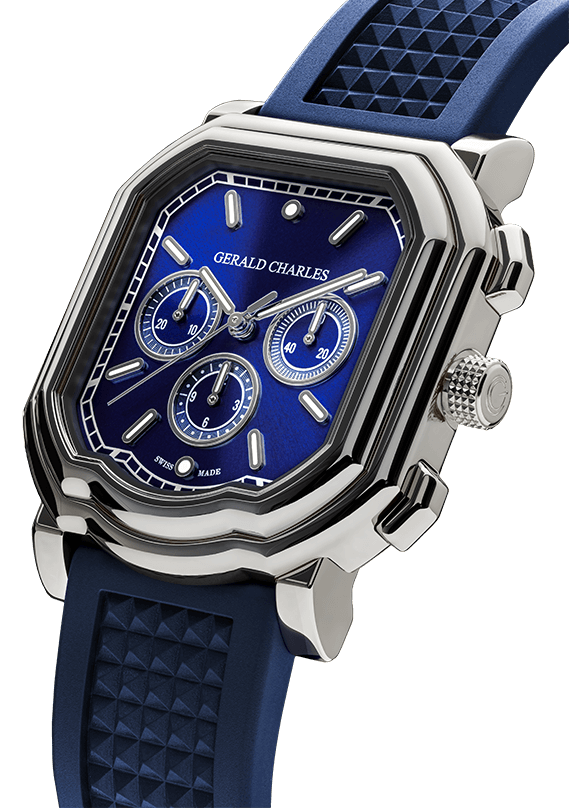




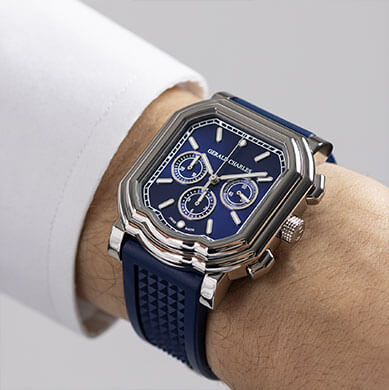



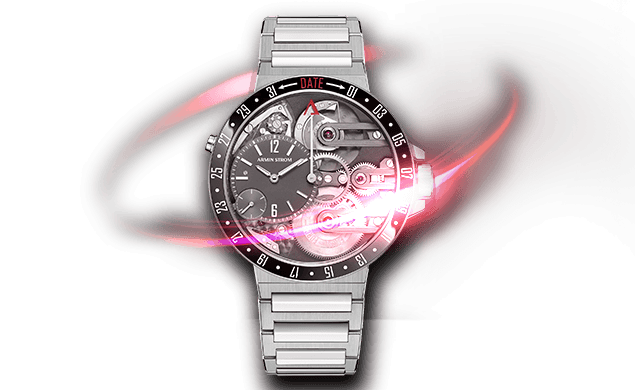




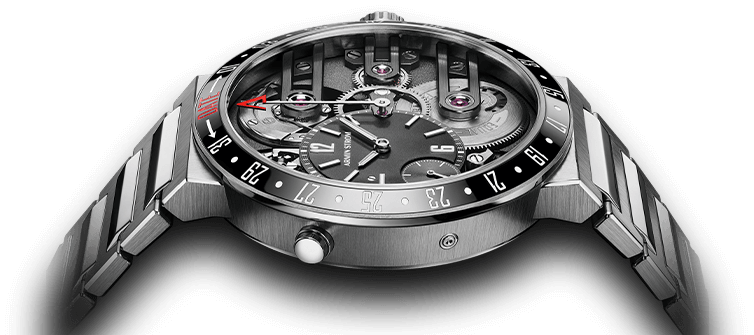













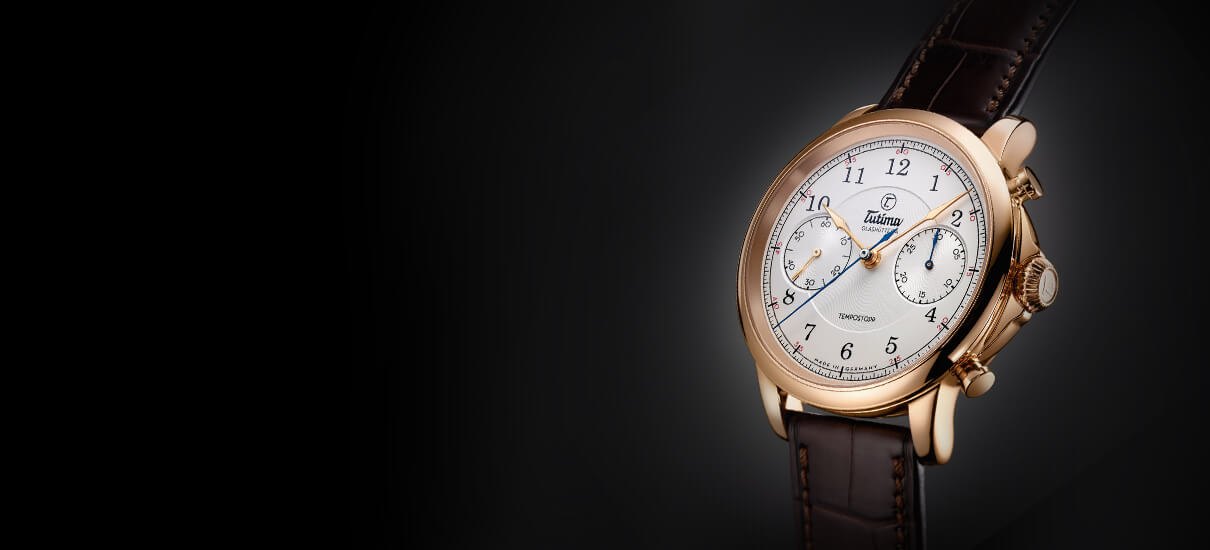

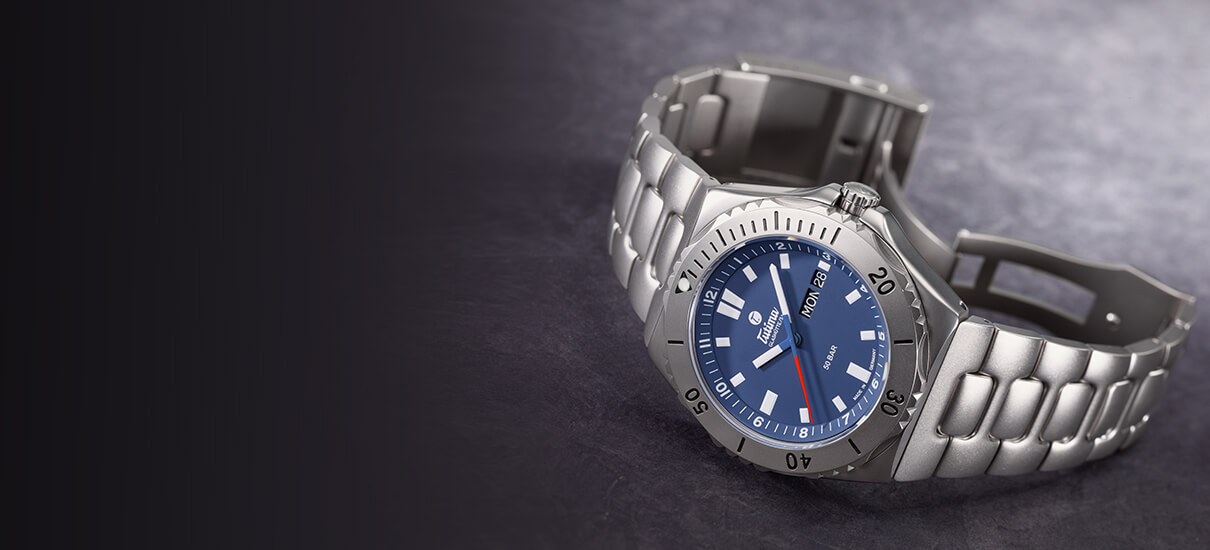



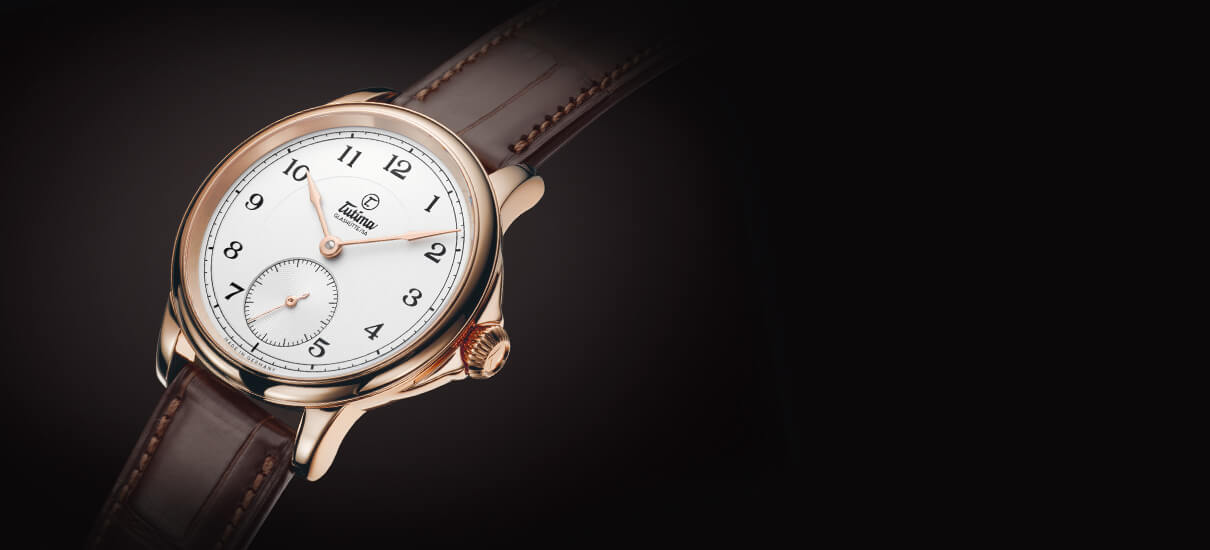





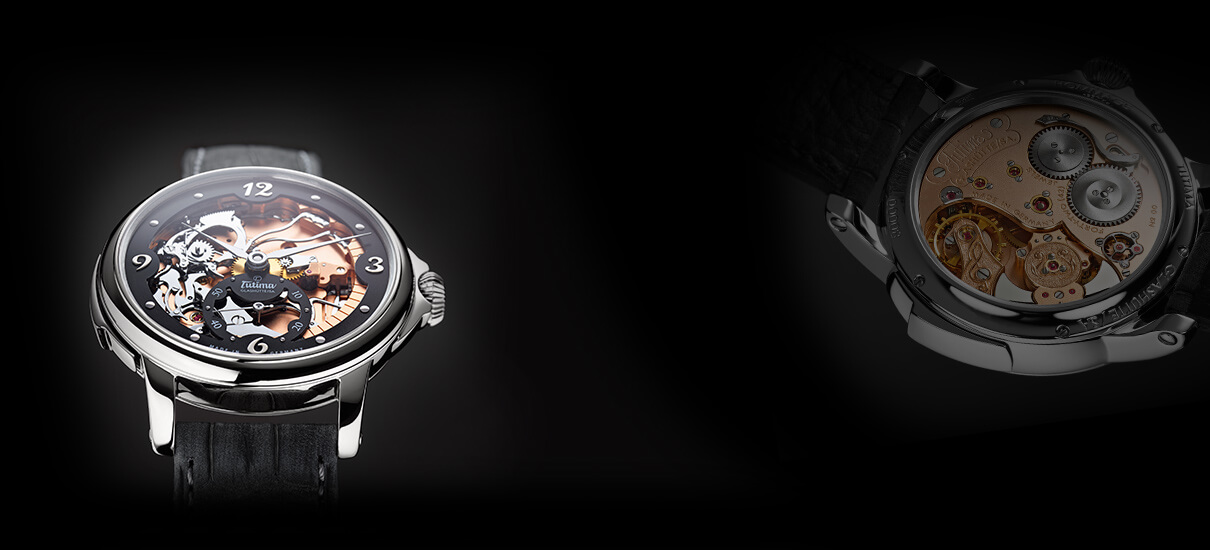



Cyclone Ian has just passed through Pinar del Río, wiping out all the tobacco. And let’s not forget that when you inhale the flavor notes, you are smoking the very low paid labor of many Cubans exploited by the ruling elite.
Hi Trotando. Thanks for your comment.
As to the damage caused by Ian, very much so. My sources, who have very high level contacts in Habanos tobacco, tell me that at the moment, no crops in the field. Also, 30,000 tonnes of stored tobacco was destroyed (equates to three million robustos). However, it did not wipe out everything as much of the last crop was sent to storage locations that were not damaged at all. This does not take into account that a further 10,000 tonnes were destroyed by fire earlier this year. But the outlook for them is dismal and they will take years to recover.
Of course, this is hardly the first time they have been badly hurt by hurricanes and it surely won’t be the last. Indeed, with climate change, expect things to get even worse.
Your other point about the exploitation of workers is not quite so straight forward. Last thing I want to do is turn this into a political forum but would ceasing to smoke Cuban cigars help the workers? I think it would merely mean that they would lose their low paid jobs and put them in an even worse position. Far better to lobby against that iniquitous and pernicious US embargo that has done inestimable harm to the Cuban people. The stupidity of maintaining an embargo that has not done a shred of good over 60 years is beyond me.
But looking further, Cuba is hardly the only place where there are problems like this (exploitation of workers, not embargos). How many of us have worn clothes/shoes/other items, knowingly or unknowingly, from third world sweatshops? Gold from mines where kids are working with mercury for peanuts? Enjoyed a cup of coffee that is not fully fair trade? And so on. Singling out cigars seems a bit harsh.
certain. the world is a horrible place. but with very very horrible points. If we remain silent, I believe that we are part of the problem and not of the solution. That’s why I make this same type of comment where I see the other injustices you mention. With respect to the embargo, until now it did not fulfill its mission, but it seems that the castle that governs this beautiful island in an inappropriate way is beginning to shake.
We can always hope but I am certainly not holding my breath. They have proved incredibly resilient.
Trotando, do you smoke cigars? Have you spoken to the Cuban workers or have personal familiarity with their working situation? Sounds very much like the talking points of the elite universities my kids attended lol ….
Phred Ziphell as far as I’m concerned, his indolence and mockery does not deserve the slightest response. But I will answer because of the interest it may have for human readers who are unaware of the drama of the Cuban people. Yes, I have been to Pinar del Rio. The fertile land that grows the best tobacco in the world. At the same time, it is one of the poorest provinces in Cuba. And yes, I have been able to talk with those who grow and process the exquisite cigars by hand. Anyone would say that this must be a land of well-being and abundance. But it is not like that, its people live poorly and are saddened while you smoke the fruit of their work.
Hi Trotando, I have absolutely no argument with anything you have said in relation to conditions in Cuba. Harsh indeed.
My one caveat would be that many of the growers and rollers are extremely proud of their work, as they should be, rather than saddened. They are also realistic enough to understand that if we stop smoking their work, for whatever reason, then their lives would be even harder. Sadly, not a perfect world by any means.
Running out of arguments from the comfort of a country where its leaders invest in the well-being of its inhabitants is the most logical thing, it is also logical, if doing the opposite harms our business. You talk about those who roll tobacco, happy, because they live a little better than the rest of Cubans, but you forget or maybe you don’t know that their salary is not enough to achieve it. I assure you that they have to steal tobacco, which they then counterfeit and sell to foreigners. You forget that those who tend to the land that makes it grow also work in tobacco. These, I assure you, are saddened. And yes, surely if you don’t smoke their work they would live worse, but sometimes you have to shake yourself to remove the ballast from above. They must shake off. You seem like a good person, uninformed but good, I just wish you don’t get scratched by any US sanctions for trading with those oppressive potbellies
Hi Trotando. Thanks for your thoughts. (my Spanish is not good enough to be able to follow in that language).
I would state that the concept of happy and proud are different. I am not suggesting that the Cuban’s lot is a happy one at all. That does not mean that they cannot be proud of what they achieve and I know that many are very proud and justifiably so. At no stage have I said that they were happy. You have either misquoted or misunderstood what I am saying.
No doubt I am not as informed as I might wish to be on this and many other subjects, but I have spent a considerable amount of time in Cuba over many years with numerous visits. I have lived with Cuban families and friends at times when there and have visited outside Havana for perspective. Some of my dearest friends are Cuban.
I have met with and know people at all levels from the tobacco industry – grower, roller, management and so on. I have visited the farms and the factories and have had the chance to meet with government ministers on several occasions. So, while one can always learn more, I like to think I have a reasonable understanding.
I am very aware of salaries in Cuba and a lot more.
As a moderator on an international cigar forum for a couple of decades, I have heard all the arguments from all sides endless times and am very aware of the process of counterfeiting. And having lived in DC for a period, I am all too aware that Cuba has tragically become a political football, one where I suspect that both sides have long forgotten the original aims of the embargo.
On the embargo, I think I made my view of it very clear in my first response to you.
I am not exactly sure what you mean by “but sometimes you have to shake yourself to remove the ballast from above. They must shake off.” But if it means making the sacrifice by boycotting Cuban cigars, if that was likely to improve the lot of the Cuban people, I am certain that myself and many others would do so. But the embargo has shown that is nonsense and does no good. All it would do would be to inflict further harm on the people. Yes, no doubt that many of the oppressors get richer because of it and I wish that was not soi, but by taking that action, you may cause a small harm to the oppressors but a much greater harm to the people.
If, as seems you might be, you are suggesting that the Cuban people should make the sacrifice by no producing the cigars in the first place, how on earth does that help? And very easy for others to suggest that they make the sacrifices. One of the things that most impresses me about my Cuban friends and the people is the incredibly innovative way they live. They will take advantage of any opportunity to improve their lives and those of their families, in the face of government oppression and international indifference. And why shouldn’t they? They know full well that making a stand against the government and the embargo by making sacrifices is pointless. And dangerous, given their precarious position.
Rather than inflict pain on the people, surely better to pressure the US to remove the embargo.
I think the bottom line is that we would both love to see a better future for the Cuban people and for them to be allowed the freedoms so many of us enjoy. We may not completely agree on the best way to get there. Fingers crossed we see it in our lifetimes.
Pareces buena persona, desinformada pero buena, solo te deseo que no te arañe ninguna sanción estadounidense por comerciar con esos barrigones opresivos